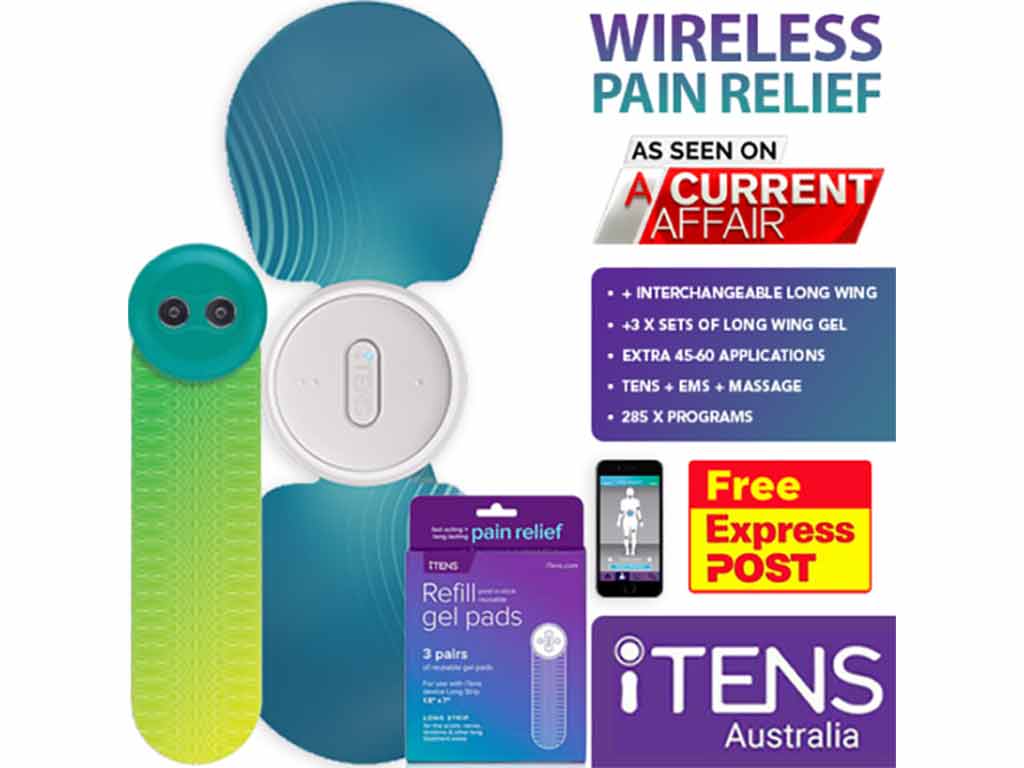A Transcutaneous Electrical Nerve Stimulator unit is a portable medical device that delivers electrical currents to the device. It aims to alleviate pain and improve the quality of life in individuals suffering from various conditions. This non-invasive therapy has gained popularity due to its effectiveness in managing acute and chronic pain. It also offers a natural alternative to pain medication, reducing the risk of dependency and side effects. The device is easy to use and requires no prior training.
Transcutaneous Electrical Nerve Stimulation, or TENS treatment, is a pain management method often used in physical therapy and rehabilitation. Pain specialists recommend this modality to people with chronic pain or recovering from an injury. It can be used as a stand-alone or complementary therapy to other pain relief methods. This article will provide a complete guide on the use of nerve stimulators, including how they work, their applications, and a safety and care guide.
Jump to a Section:
- What Are Transcutaneous Electrical Nerve Stimulator Units?
- How Do Transcutaneous Electrical Nerve Stimulator Units Work?
- Types of Transcutaneous Electrical Nerve Stimulator Units
- Benefits of Transcutaneous Electrical Nerve Stimulator Units
- Using a Transcutaneous Electrical Nerve Stimulator Unit for Labour
- How to Use Transcutaneous Electrical Nerve Stimulator Units
- Transcutaneous Electrical Nerve Stimulator Unit Pad Placement Guide
- Can You Buy Transcutaneous Electrical Nerve Stimulator Units for Home Use?
- Safety Guidelines When Using a Transcutaneous Electrical Nerve Stimulator Unit
- Transcutaneous Electrical Nerve Stimulator Units vs Other Pain Relief Methods
What Are Transcutaneous Electrical Nerve Stimulator Units?
Transcutaneous electrical nerve stimulator units are battery-operated devices for pain relief. They deliver low-voltage electrical currents to specific areas of the body through electrode pads placed on the skin. The pads can be self-adhesive or need a conductive gel for optimal contact. Thus, they stick to the skin without penetrating the surface or leaving permanent marks.
The electrical currents generated by the device stimulate the nerves and interfere with the pain signals, providing temporary relief. Moreover, the device has programmable settings, allowing for customisation of the treatment parameters such as intensity, frequency, and duration of the electrical pulses. This customisation ensures that the device can be tailored to individual needs, comfort levels, or preferences.
In its earlier form, the device was bulky and required a healthcare professional to administer the treatment. However, advancements in technology have led to the development of portable and user-friendly units that can be used at home. Modern devices do not require professional supervision, and they are safe to use with simple instructions.
Main Purpose of TENS Machines
- Pain management: Provide temporary relief for various body aches and health conditions.
- Injury rehabilitation: Manage pain and discomfort while coping with sports injury or trauma.
- On-the-go treatment: Enable pain relief management anywhere, reducing the need to go to pain clinics or physical therapy centres. Hence, it minimises the likelihood of skipping work days or important events.
- Post-surgical recovery: Manage pain and discomfort while recuperating from a surgery or medical procedure.
- Labour pain management: Alternative pain relief method from intense contractions during labour. Women who want to avoid analgesic drugs or injections may opt for a TENS machine.

How Do Transcutaneous Electrical Nerve Stimulator Units Work?
The transcutaneous electrical nerve stimulator unit works based on the principles of electrical stimulation. Nerve cells, or neurons, generate and transmit electrical signals containing sensory information to the brain. One of these information is pain. Thus, an external device, such as TENS, can interfere with these pain signals and provide relief.
When an electrical current passes through the body, it can disrupt the normal functioning of the nerves and muscles. This can lead to a range of effects, depending on the strength and duration of the current. Furthermore, the efficacy of electrotherapy depends on the path of the electrical impulses, the resistance of the body, and the duration of exposure.
There are also various techniques or TENS modes that deliver different pulse patterns. A common mode is acupuncture-like TENS. It is the use of a high-intensity/low-frequency combination to produce strong but non-painful sensations or comfortable muscle contraction. Another technique is the conventional TENS, which delivers continuous pulse patterns. The last kind is burst-mode TENS, which stimulates the peripheral nerves using higher pulse rates.
Mechanisms of Action
There are two main mechanisms involved in providing relief. The first is the Gate Control Theory. It suggests that pain signals travel through nerve fibres that act like gates. By providing electrical stimulation, it can activate the sensory nerves, effectively closing the gates. This mechanism blocks the pain signals in the spinal cord from reaching the brain.
The second mechanism is the release of endorphins. Endorphins are natural painkillers produced by the body in response to certain stimuli. They inhibit the nerve cells from sending pain messages. The device can trigger the release of endogenous opioids, alleviating pain and promoting a sense of well-being.

Types of Transcutaneous Electrical Nerve Stimulator Units
There are several types of transcutaneous electrical nerve stimulator units available on the market. The first type is the standard or traditional TENS device. It utilises lead cables to connect the unit to electrode patches. From the handheld device, users can directly control the pulse rate or frequency, pulse duration, and intensity.
The second type is the wireless TENS device. This type utilises Bluetooth technology instead of cables. Most wireless units have a downloadable app where users can access and control the treatment parameters. Since it eliminates the need for wires, it is more compact and lightweight. Additionally, the electrode patches come in various shapes and sizes, such as rectangular, butterfly, or wing-shaped, to accommodate different body parts.
Another type is the wearable TENS device. It is worn on the body and typically comes in the form of a belt, band, or wrap. Moreover, electrical nerve stimulators either use replaceable or rechargeable batteries. Rechargeable units have built-in lithium-ion batteries, which have a longer lifespan and provide consistent power.
Wireless Devices
Wireless devices offer the convenience of not having to deal with tangled wires or limited mobility. Users are not restricted by any cords, allowing them to move freely and comfortably while receiving treatment. This is particularly beneficial for individuals who are constantly on the go or have active lifestyles.
The wireless types are more discreet when worn under clothing. Individuals can use the device while working without interruption to their activities. In addition, it offers more preset modes or programs through the smartphone app. This provides efficient pain management through selectable options, minimising the need for guesswork or a trial-and-error process.
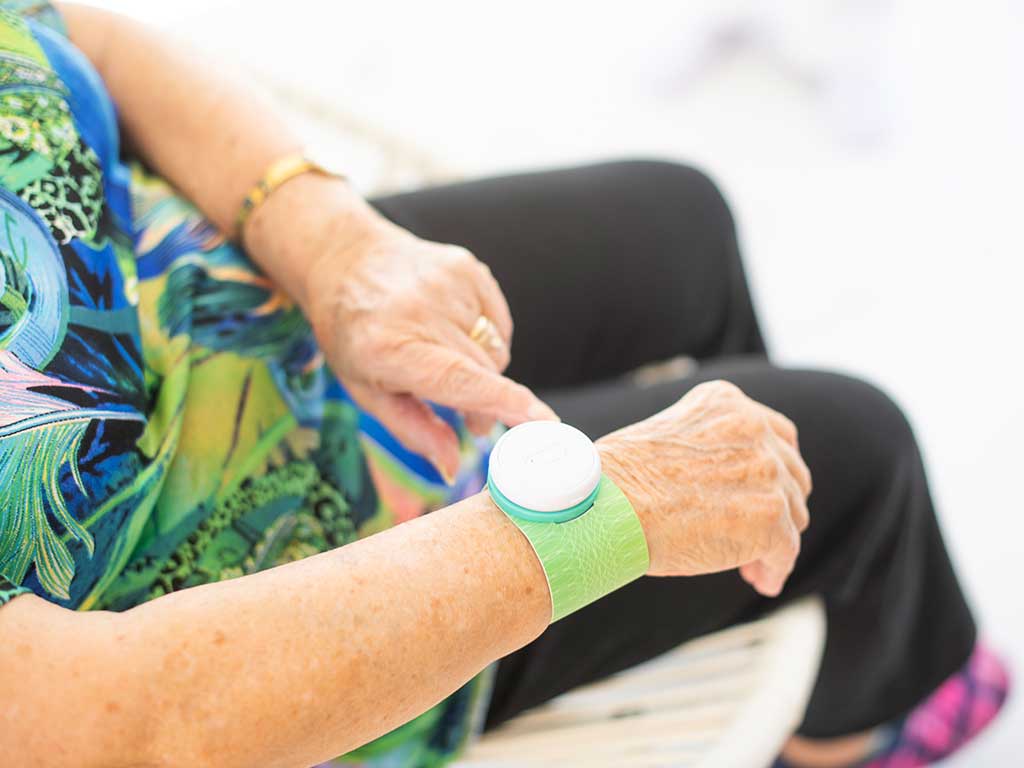
Benefits of Transcutaneous Electrical Nerve Stimulator Units
Transcutaneous electrical nerve stimulator units offer numerous benefits. One of the main benefits of the device is to provide immediate pain relief. Individuals can experience instantaneous effects while using the machine. It also boosts blood circulation, reducing inflammation and swelling in the area that contributes to pain.
Another key benefit of electrical nerve stimulation is promoting healing. The increased blood flow delivers more oxygen and nutrients that are necessary for regeneration. Consequently, it helps relieve muscle tension and soreness and increase the range of motion. Likewise, TENS help improve sleep patterns due to less stress and anxiety from pain. Reducing the frequency and intensity of symptoms means not having to worry about disruptions at night.
One of the key advantages of nerve stimulators is the ability to provide localised relief. Individuals can place the electrode patches directly on the pain area to stimulate the affected nerves. Hence, it minimises the likelihood of affecting nearby tissues, nerves, and vital organs. Moreover, the device is versatile to use. It is suitable for various conditions and levels of pain, offering comprehensive management.
Health Conditions TENS Can Treat
- Strains and sprains – Injury to the muscles, ligaments, and tendons due to overuse or tears. The pain usually disappears once the injury has healed.
- Postoperative pain – Pain and discomfort after surgery. Individuals often experience swelling and redness at the incision site, limiting their range of motion.
- Period cramps – Some women experience uncomfortable cramping in the abdomen during their menstrual period.
- Neuropathic pain – Damage or disorder to the nerves, sending constant pain signals to the brain. Examples are sciatica and diabetic neuropathy.
- Arthritis pain – Inflammation of the joints due to wear and tear.
- Musculoskeletal pain – Disorders affecting the muscles, bones, and ligaments.

Using a Transcutaneous Electrical Nerve Stimulator Unit for Labour
Another practical application of a transcutaneous electrical nerve stimulator unit is for labour pain management. TENS is a popular drug-free option for pregnant women who do not want to use medications or intrusive procedures. Many women find it helpful during labour because it provides a distraction from the intensity of contractions.
The electrodes are applied to the lower back, which is a common area of discomfort. It allows women to have control over their pain relief by adjusting the electrical impulses according to their needs. It is best used at the early stage of labour and throughout the delivery phase. Moreover, women may use it in combination with other methods, such as breathing exercises and relaxation techniques.
An advantage of using the device is that it is safe for both the mother and the baby. It does not have known side effects or risks. Additionally, it does not interfere with the progress of labour or the ability to move around. It can also be used at home at the start of mild contractions or in a hospital setting.
When Should You Not Use TENS During Pregnancy
TENS is safe to use for managing labour pains. However, there are situations where using the device is not advisable. TENS is not suitable for use before 37 weeks of pregnancy, especially in the abdomen. This is because it may induce contractions and lead to preterm labour.
It is also crucial not to use TENS for women who have a history of pregnancy complications or miscarriage. This includes preeclampsia or hypertension, gestational diabetes, and placental abnormalities. It is important to consult a healthcare provider for guidance and advice. Of vital importance is to avoid use in water, such as in a birth pool.
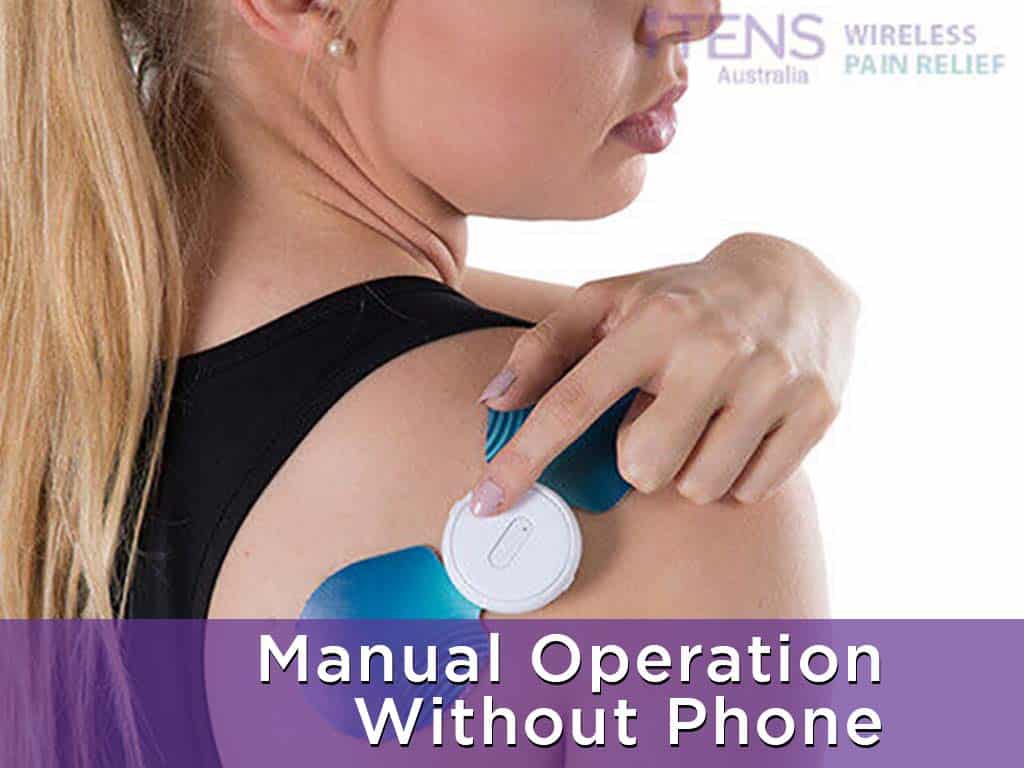
How to Use Transcutaneous Electrical Nerve Stimulator Units
Using a transcutaneous electrical nerve stimulator unit involves a few simple steps. Adhering to these guidelines helps ensure effective use. To begin, identify the electrode placement and position the pads on the target area. Make sure the skin is clean and dry before putting the electrodes. Remove any oil, lotion, sweat, or dirt to ensure optimal adhesion.
Once the pads are securely in place, turn on the device and set the frequency, duration, and intensity. It is recommended to begin with a low-intensity level and gradually increase as the body gets used to the currents. Users may experiment with different parameters or programs to find one that provides the most effective relief.
The treatment duration often lasts between 15 to 30 minutes, depending on the specific type of pain or condition. After the session, turn off the device first before removing the electrodes from the skin. If needing a longer treatment, individuals may continue with the therapy after 20 minutes. It is vital not to use the device for more than one hour at a time to prevent skin irritation.
Adjusting the Settings
The device has customisable settings either through the handheld controller or through a smartphone app. The frequency refers to the number of pulses in a second. Low-frequency (LF) TENS is ideal for releasing endorphins, while high-frequency (HF) TENS is suitable for severe or acute pain. In particular, HF TENS helps activate the pain-gating mechanism of the body.
Pulse width refers to the duration of each pulse. A higher pulse width provides more stimulation. On the other hand, intensity refers to the strength of the electrical impulses. Users can adjust the intensity level based on their comfort and tolerance.

Transcutaneous Electrical Nerve Stimulator Unit Pad Placement Guide
The electrode pads are an essential component of the transcutaneous electrical nerve stimulator unit. These pads are typically made from flexible and durable materials that allow them to adhere comfortably to the skin. In addition, the key to effective pain relief is proper pad placement. It is essential to position the pads on or near the area experiencing pain or discomfort.
There are different placement options depending on the type of pain. For localised pain, such as a specific joint, position the pads around the affected joint. For broader pain, such as the lower back, place the electrodes on either side of the spine. However, for pain on one side, position the pads on the side where the pain is felt.
Ensure the flow of currents is directed to the centre by applying the electrodes surrounding the most painful spot. When attaching the pads, make sure to keep them at a distance of one to two inches from each other. Placing them too close together may cause discomfort or a concentrated sensation of electrical stimulation.
How to Prolong TENS Electrode Pads
- TENS pads are reusable for several uses before requiring replacement.
- Clean the skin thoroughly before applying the TENS pads to ensure optimal adhesion and avoid contamination.
- Clean the electrodes after use by removing excess gel. Do not use abrasive material when cleaning the pads.
- Place the protective liners back on the pads after each use to prevent dust and debris from accumulating on the adhesive.
- Apply a few drops of water on the electrodes to restore its stickiness.
- Avoid excessive stretching or pulling of the electrode pads to prevent damage.
- Store the device in a cool and dry place to prevent moisture or heat damage.
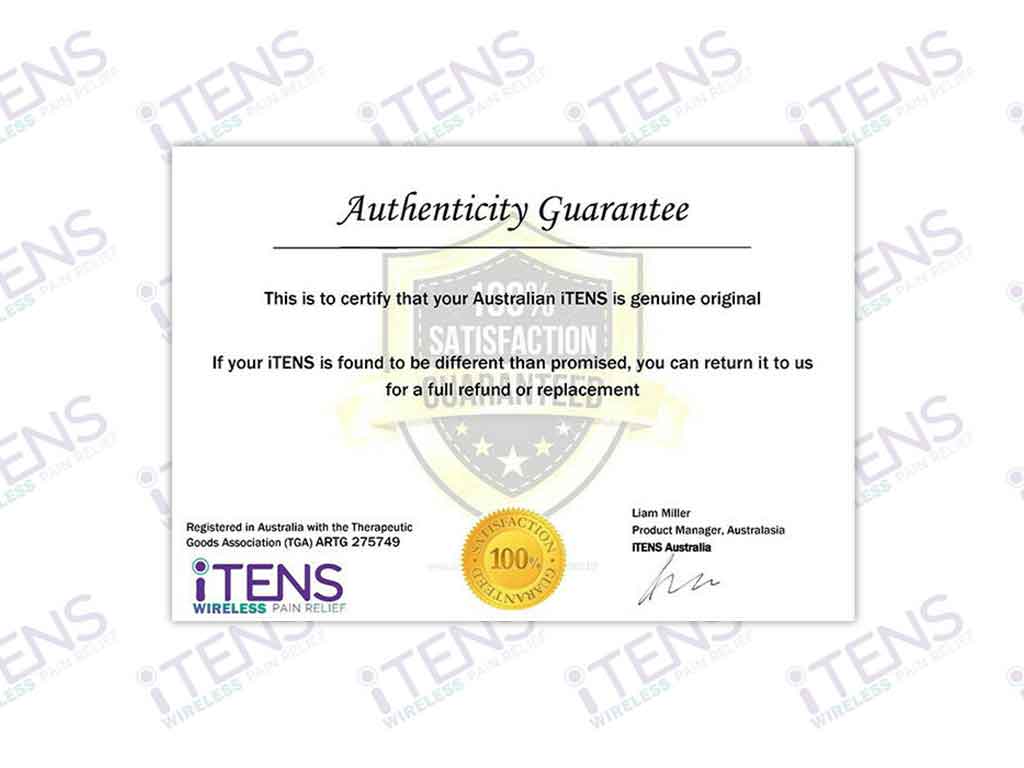
Can You Buy Transcutaneous Electrical Nerve Stimulator Units for Home Use?
Transcutaneous electrical nerve stimulator units are available for personal purchase. Individuals can buy the device for home use so they will not have to go to a pain clinic every time they need treatment. These medical devices are available in pharmacies and medical supply stores nationwide without a prescription. Additionally, they are often more portable than those in treatment centres with simple controls.
A personal device is convenient for individuals who require ongoing pain management. It enables them to have control over their treatment and use it whenever necessary. Nevertheless, it is vital to consider some factors when purchasing a device. Look for a unit with adjustable settings and user-friendly features.
Some units may have additional functions, such as preset modes. These are programs with built-in settings for specific conditions or body aches. The number of these programs varies with each model. Thus, individuals should check if the device contains the necessary treatment mode. Lastly, the costs of TENS machines depend on the number of features, durability, technology, and overall quality.
Where to Get the iTENS Wireless TENS Machine
iTENS is a wireless TENS machine that offers convenient and innovative pain management. It features wing-shaped electrodes that can easily fit in various areas like the joints. Individuals who want hassle-free pain relief may purchase the iTENS at iTENS Australia online. It offers various electrode sizes, including small, large, and spare long wings.
iTENS Australia delivers nationwide shipping through Australia Post. Aside from the kit, accessories are also available to purchase, such as refill gel pads, spare wings, and charging cables. It is important to get a device from authorised dealers or retailers to ensure the authenticity and quality of the product.

Safety Guidelines When Using a Transcutaneous Electrical Nerve Stimulator Unit
Observing proper usage guidelines and precautions when using a transcutaneous electrical nerve stimulator unit is essential for safe use. Firstly, as an electrical device, it is crucial not to use or expose it to water. This can cause electric shocks and damage to the device. Secondly, avoid use while sleeping to prevent overtreatment and while driving or operating heavy machinery.
Thirdly, always start with the lowest intensity setting and gradually increase as necessary. It is advisable to use the unit for short periods initially, around 20 minutes per session, to gauge how the body responds. Exceeding one hour of use or high-intensity levels can lead to discomfort. Monitoring the response to the stimulation is important to make the necessary adjustments and prevent potential harm.
Additionally, electrical nerve stimulation has several contraindications. Individuals with serious medical conditions should seek medical advice before using such devices. It includes heart problems, epilepsy, cancer, pregnant women, and those with implanted devices. In case of adverse reactions, discontinue use and consult a doctor.
Are There Potential Risks and Side Effects?
While electrical nerve stimulators are generally safe, there are some potential risks that individuals should be aware of. One possible consideration is the risk of skin irritation, redness, and other side effects. It may occur due to allergic reactions from the adhesives of the electrode pads.
Another potential side effect is dizziness and nausea, especially if the intensity of the stimulation is too high. Some individuals may also experience muscle twitching or spasms during use. These side effects are typically temporary and should subside after removing the device. It can also interfere with the functioning of implanted devices, such as a cardiac pacemaker.
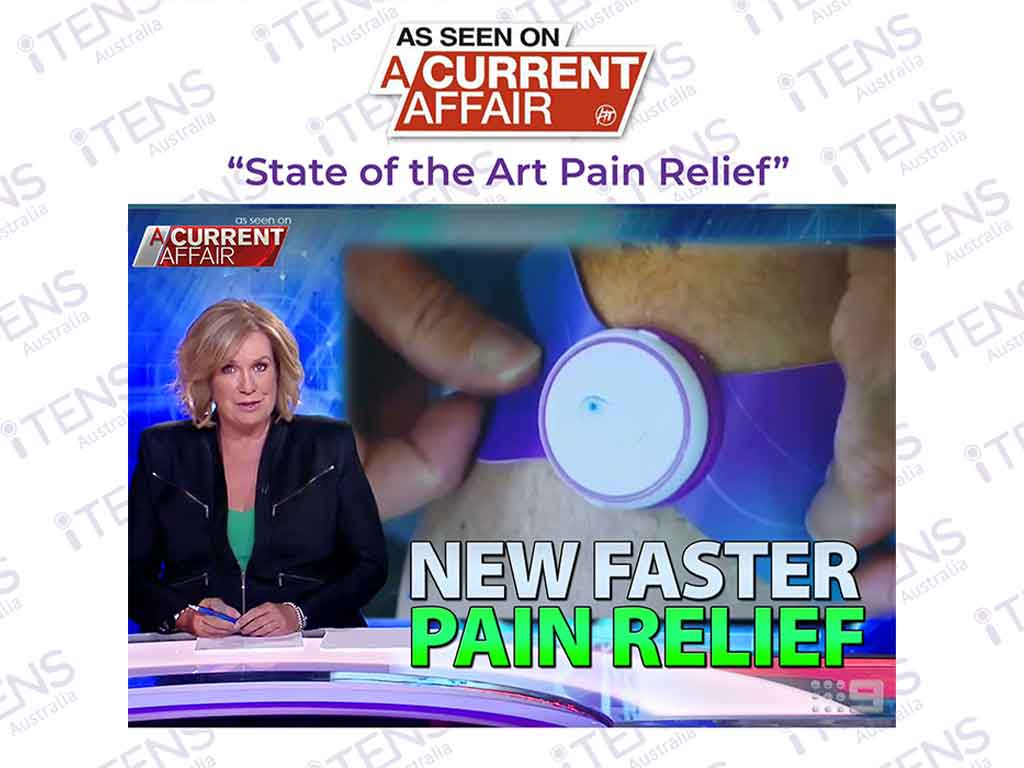
Transcutaneous Electrical Nerve Stimulator Units vs Other Pain Relief Methods
Transcutaneous electrical nerve stimulator units are a popular method of pain relief for those who prefer non-medication options. Unlike medications, TENS does not have significant or long-term side effects. Oral pain reliever side effects often include nausea, digestive issues, and potential damage to internal organs with prolonged use. On the other hand, TENS eliminates the possibility of overdosing or developing a dependency.
Moreover, TENS is non-invasive. It does not have intrusive procedures, unlike injections or surgery. The electrode pads adhere firmly to the skin without being uncomfortable. Thus, it avoids the risks and inconveniences that are inherent in surgery, such as infections and long recovery periods. It also minimises the need for intrusive procedures or interventions.
Unlike physical therapy, individuals can use nerve stimulators without professional supervision. This reduces the frequency of visits to a physical therapist or treatment facility. Hence, it is a cost-effective option for managing chronic pain. Overall, electrical nerve stimulation offers a versatile approach and a safer alternative to pain management.
Advantages of TENS
- Non-invasive: This method of pain relief does not require needles, which can be painful or uncomfortable for some individuals.
- Drug-free: TENS provides pain relief without the need for medication, which can have unwanted side effects and risks. In addition, it is not habit-forming, meaning it does not lead to addiction.
- Versatile: TENS can be used to manage a wide range of pain conditions, including muscle pain, joint pain, and postoperative pain.
- Adjustable intensity: Users can adjust the intensity of the electrical stimulation to suit their comfort level and individual needs.
- Convenience: Individuals can use the device to achieve pain relief with minimal effort.
Conclusion
Pain management with a transcutaneous electrical nerve stimulator unit is a safe and convenient option. The device is easy to use and provides numerous benefits. It utilises mild electric currents to stimulate the nerves to relieve various conditions like chronic and acute pain. It works by triggering the release of endorphins and blocking pain signals. Moreover, the adjustable settings of the device enable tailored treatment according to individual needs, comfort level or tolerance.
There are several key aspects to consider to attain effective treatment. It includes proper pad placement, appropriate settings and maintenance. In particular, avoid putting the electrodes on sensitive regions like the head and areas with broken skin or infection. Furthermore, following the safety precautions can help prevent unwanted risks or side effects. By adhering to these guidelines, users can maximise the benefits of the therapy. For best results, consult a health professional for guidance and advice.








